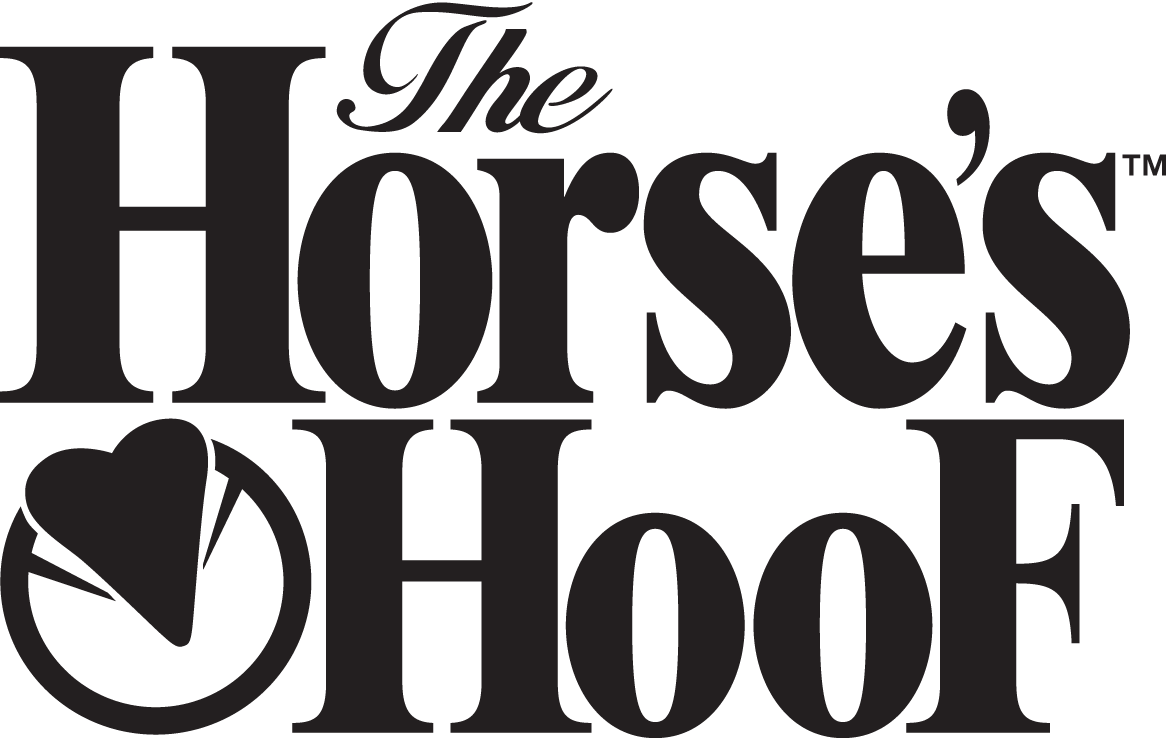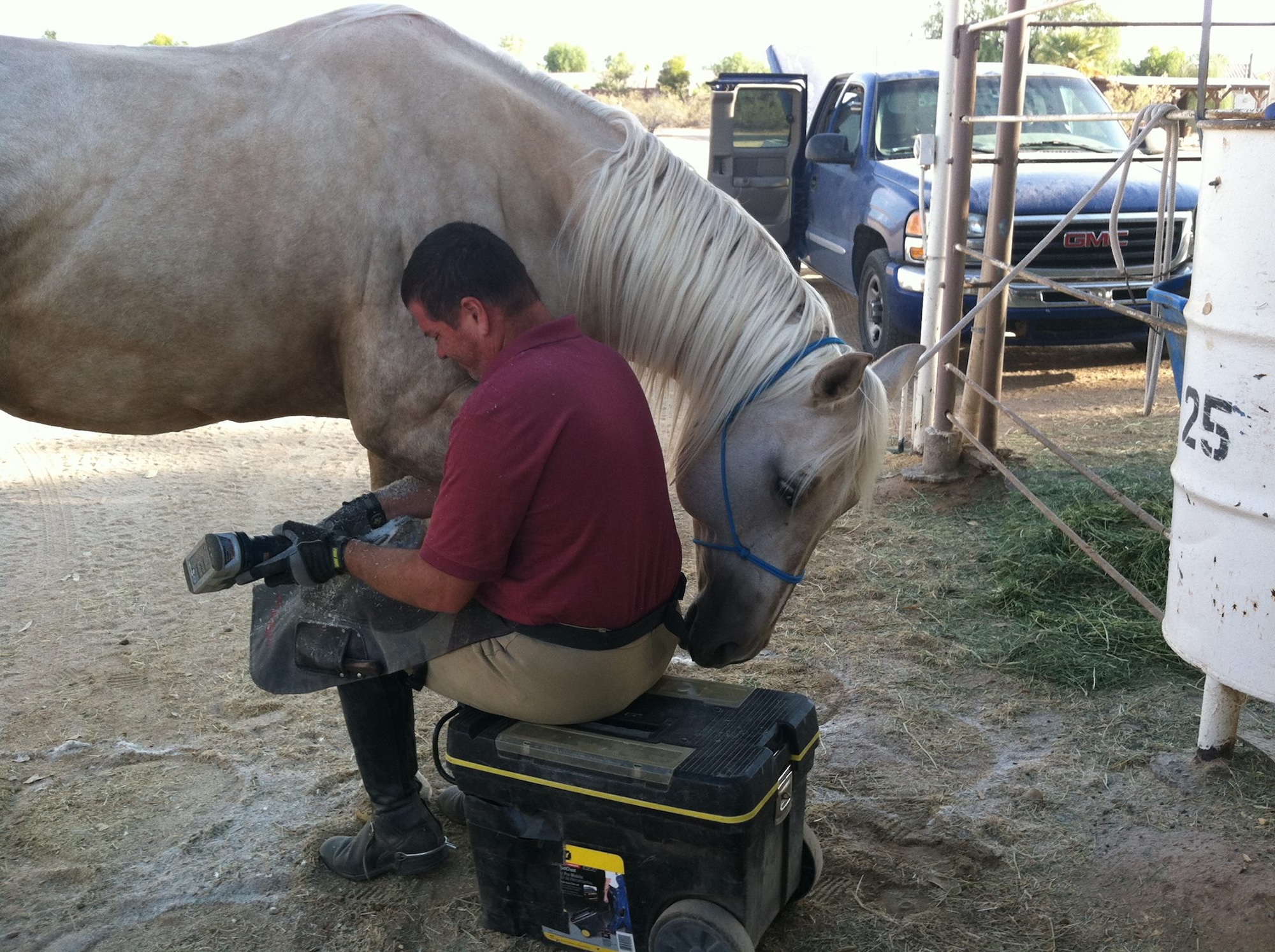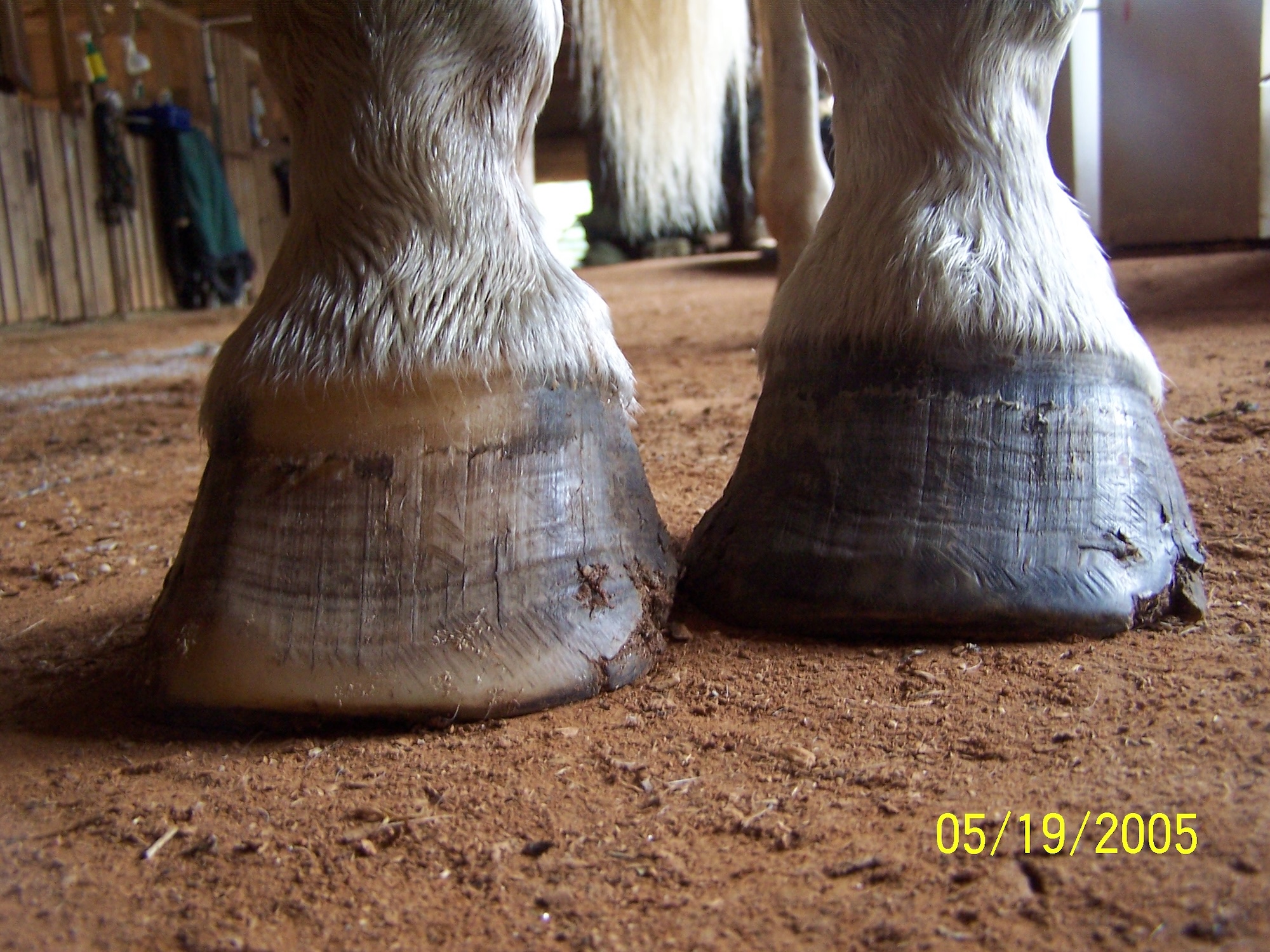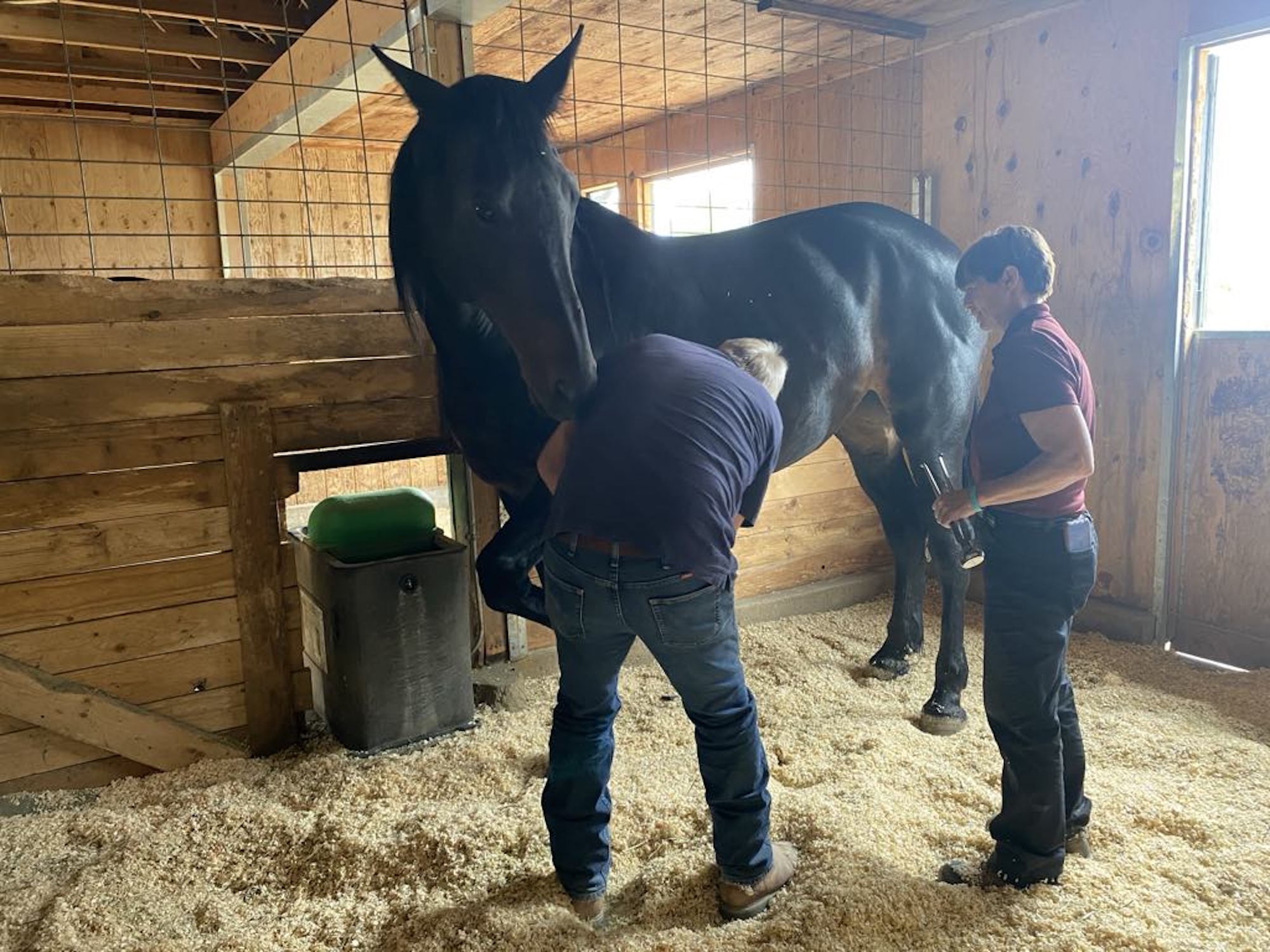About barefoot hoof trimming: The last 20 years have been a most humbling experience. When I started, I was going to solve all of the horse’s hoof problems. I begrudgingly have had to realize that there are some things, even with current technology and knowledge, we can’t fix and sometimes when we try too hard to find a solution, we do more harm than good. That being said, we can help most horses live a better life. The real question is ‘Is that better life going to be good enough?’ I have never failed to improve the form of a hoof, but I have, from time to time. failed to relieve the excruciating pain associated with founder. Here is my advice for amateur and professional trimmers:
Leave some of the ugly on the hoof. By that I mean, don’t be obsessive about the perfect trim. The perfectly beautiful and smooth trim will most certainly be too short. Just get the shape and length as correct as possible, while being careful not to over-trim the hoof.
You can’t fix everything. If pathology has progressed too far, there may be nothing that can be done. In extreme cases, you could do everything exactly right and it just doesn’t help. I will help any horse that I am requested to, and do not consider it to be my responsibility to determine when to put the horse down; that is the owner’s responsibility. I would never put one of my own horses through months, possibly years of excruciating pain if there wasn’t significant progress. You are not doing them any favors by keeping them alive.

Don’t be obsessive about the perfect trim! Here is a nice Welsh Pony hoof.
Probably the worst thing for an otherwise well-maintained hoof is for the horse to stand in their own filth. While clean urine is sterile, once it hits the ground, all sorts of things start growing; also horse manure contains fecal bacteria, which breaks down protein. The hoof is made up of keratinized cells (protein). The horse’s waste deeply infects the hoof horn – much deeper than most realize – and recovery will take time once it starts causing problems, usually tenderness to point pressure, white-line separation, and thrush. What further complicates the situation is that many horses with hoof problems seek it out to stand in it. I believe the moisture loosens the hoof, much like untying a shoe that is too tight. Also, the softness of the wet ground or manure is soothing to the horse. So the most important thing an owner can do for their ailing horse is to keep their living area clean and dry.
Most domestic hooves I encounter are just too long. While an overly long hoof may be “comfortable” for the horse, the hoof that is too long causes damage to the underlying foot. Most damage I encounter that is mechanical is caused by hoof horn that is too long. It may be all over too long, or it could be localized. Many bruises that people assume are caused by external forces such as stepping on a rock (stone bruises) are actually caused by an overly thick spot in the sole, overlaid or impacted bars, or, in the case of white-line separation, sole that has been folded inward under the solar border of the coffin bone.
Bar and sole are not interchangeable. Many times when a horse is assumed to have a thick sole, it is actually bar horn, not sole at all. The pressure of the bar covering the sole will only prevent good sole growth.
In the desert southwest, the part of the hoof most neglected by the trimmer is the bars. In most climates and with nearly all domestic habitats, you must trim the bars. I have never seen a domestic horse that could maintain their own bars and indeed the entire hoof. However if you are a billionaire, are willing to spend the money, a free thinker, and willing to experiment, I think I can create the correct situation for the self-maintaining horse. Warning though, you may not be able to find or catch your horse to ride.
The bars are the mechanical cause of heel contraction, bulb contraction, and when they become impacted, the primary cause of navicular syndrome. I know that is a bold statement but in my experience, it’s true. The hoof moves with constant pressure. Dr. Bowker used to compare it to peanut butter, but I think the better analogy would be taffy, because when moved too quickly taffy breaks. So when the pressure is increased on overgrown bars, the bars migrate upward into the foot, pulling the sole and frog upward with them drawing the heel of the hoof inward. The high pushed or impacted bars then interfere with the proper functioning of the flexor system, especially the navicular region, and causes adverse pressure which restricts circulation in the entire foot.
You can’t change poor hoof mechanics by just making the same mechanics shorter. You have to move weight bearing pressure from one structure of the hoof to another. The result is not always optimal. The perfectly balanced trim is not usually possible at the point of the first trim, especially if shoes were removed – and may not happen for some time, or in the case of some pathology, maybe not at all.
What I mean by moving pressure from one structure to another is you move weight bearing pressure from the wall to sole, bar to sole, or from heel wall to frog and bulb. This is how you change the mechanics of the hoof. If, for example, you have severe white-line separation, you might remove the wall above the separation and place that load on the sole. Not optimal, of course, but, if it solves the problem, then it could be necessary. I do, however, find that frequent trimming and a good wall roll usually clears up most whiteline separation.

Arteries through the sole of the equine foot. The sole-frog junction and the bars are the most critical area for circulation in the sole and therefore very important to sole thickness, but not the only thing. The hoof must be looked at holistically.
Proper circulation in the hoof is dependent on hoof form and proper hoof mechanism. The entire hoof expands on weight bearing and contracts once lifted. For this to occur, you need a balanced trim. When I speak about hoof balance I am not talking about the elementary concept of medial-lateral balance, I am talking about the various parts of the hoof working in concert to promote circulation, support the limb, and function without causing itself or the underlying foot damage.
Blood circulation in the equine foot is not only necessary for good hoof health, it acts as the hydraulic fluid in a shock absorber. (Thank you, Dr. Bowker.) I believe if the form of the hoof is correct, that on weight bearing the concave hoof expands, which expands the tissues directly on the periphery of the frog filling the artery, (listed in my textbooks only as ‘branches to the heel bulbs’) and the surrounding vasculature with blood. Once lifted, that area contracts, pushing the accumulated blood out through the vasculature under the solar surface of the coffin bone just in time for the next impact.
Frequent and consistent trimming is an important key to success. I set my client’s trimming schedule at once every 4 weeks. I do not wait for the client to contact me. By the time the owner can tell that the horse needs a trim, he is getting far too long. My wife thankfully does my scheduling for me.
High energy horses with a tough constitution heal faster. You can never predict how long the recovery of a formerly shod or neglected hoof will take. I have seen hooves that look fairly good yet for some reason the horse was quite uncomfortable, and I have seen hooves that look horrible and yet they are sound immediately. I also have seen very old horses recover in ways I would have never believed possible, while a younger horse gives me nothing but trouble. I believe that in many of these unpredictable cases, the horse’s attitude as well as energy levels explain the difference. An energetic horse with a tough constitution will heal faster than a low energy horse that is sensitive to pain.
When it comes to the customer, you can’t make everyone happy or convince them that barefoot, and more specifically your form of barefoot, is best for any horse. Just do your job as best as you can, and freely explain why you are doing what you are doing while you are doing it. This is why I try hard to encourage my owners to be at every trim. Ultimately, everyone is looking for the BBD (bigger and better deal) so, especially if you are having problems with the horse, some smooth talker is going to convince your customer that you are doing it wrong, and they have a better answer, even if they don’t. Don’t worry about it too much, you can’t trim all of the horses in the world anyway. Sometimes even when you think everything is going well and the owner is happy, you are only one unsympathetic vet visit away from losing a client. Don’t take it personally.
Not everyone wants to know what you are doing and why. This is a shame, but in the case of the horse without problems, everything will go fine. However, if the horse has hoof problems, you probably won’t be able to keep the client.
I don’t pretend to know why, and I don’t know if this is usual, but I have 3 veterinarians as clients and I rarely see any of them, much less discuss hooves with them. They all like my results and have been clients for quite a while, but for some reason they don’t want to know how I get the results I get.
Don’t compete on price and don’t be afraid to charge appropriately. Set a price and stick with it. You should also consider having a “first trim” price that is significantly higher than a regular trim. You will spend more time with the client on the first trim, more than likely the hoof will be overgrown, and you may be removing shoes.
Bring a good natural fly spray with you. Although it would be nice if the owner had the horse ready for you, they usually won’t. That would mean hooves picked out, and the horse thoroughly fly sprayed, paying special attention to the legs, since the horse can twitch his skin to address flies on most of his body, but lacks that ability on the lower leg.
This is a hard business. As a new trimmer, you will struggle to get and keep clients. Every client you loose will haunt you, but take heart – when you are older and more experienced you will have more clients than your older body can handle.
These are just a few things I have learned over the past 20 years, thanks to Dr. Hiltrud Strasser, Dr. Robert Bowker, Jamie Jackson, and many years of sweat, pain, and heartache.
by James Welz, published in The Horse’s Hoof Magazine, Issue 80, Fall 2020
See the full content listing of all issues of The Horse’s Hoof Magazine! We also provide instructions on how to read the issues for free on Hoof Help Online.
For a detailed listing of all articles on The Horse’s Hoof website, please visit our Article Directory.




